NIES ESB - "Time Capsule" program
Long-term storage of environmental samples is called Environmental Specimen Banking (ESB). Each ESB body in the world has unique collection. National Institute for Environmental Studies (NIES), Japan started a pilot ESB in 1979. We renewed our program to "Environmental Specimen Time Capsule Program" and started storing environmental specimens and genetic resources of endangered species funded by the Ministry of the Environment.
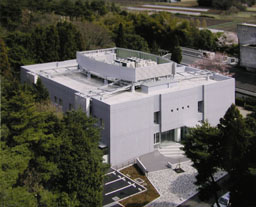
The specimens in the pilot phase ESB have been stored mainly at -20°C. In 2004, long-term storage using liquid nitrogen vapor (-150°C) was completed in the Environmental Specimen Time Capsule Building. The Time Capsule program is planning the systematic collection and banking of various kinds of environmental specimens representing the current environmental status in Japan. Temporal changes in environmental pollution over a period of 50-100 years are revealed by determining them in stored samples.
Specimens are to be stored for a long period, and await future use and analysis. For example, several cases are assumed; occurrences of new, unknown environmental issues, perception of new latent pollutants, and newly developed advanced analytical techniques. We are trying not only to prevent samples from contamination and degradation of potential pollutants, but also to preserve the effect induced in the sample organism through exposure to pollutants (biomarkers such as induction of specific genes, proteins and adducts with biomolecules). Cryogenic milling and storage in a liquid nitrogen environment are selected to secure good long-term preservation conditions.
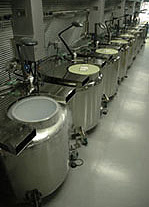
We are welcoming you to visit Time Capsule facilities at any time. However the visitors will observe liquid nitrogen storage (photo) through a glass in order to prevent specimens from avoidable contamination and infection. A detailed explanation of Time Capsule program is shown in posters at the lobby.
Sample collection in the Time Capsule program
Various environmental specimens (fishes, shellfishes, marine sediments, airborne particulate matter and human breast milk) have been collected at sites all over Japan.
Bivalve specimens are to be annually collected at site having large populations (Tokyo, Nagoya, Osaka and Fukuoka) and also in so called background areas. Bivalve sampling in to be carried out at sites located along coastal areas all over Japan at five or ten year intervals (figure below).
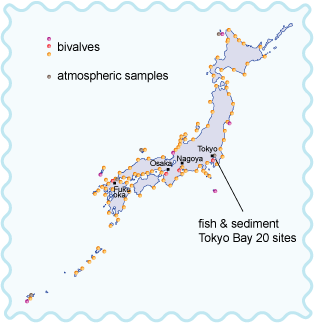
Trawling has been seasonally conducted at 20 stations in Tokyo Bay. The number of individuals and the weight of each species have been recorded for analysis of population dynamics and changes in the benthic communities. Stingray liver samples were selected for long-term specimen banking.
Particulate matter collected on filter and human breast milk samples are to be stored in a cold room (-60°C) and in deep freezers (-80°C), respectively.
Sample information for each site is tabulated separately.
How the specimens are processed
In order to preserve environmental samples for more than 50 years, we need to minimize the deterioration of sample quality and eliminate contamination as low as possible in the processes. All processes should be conducted at low temperature and in clean or controlled environment. Samples once frozen are never thawed again, and are processed into a fine powder with cryogenic milling.
Sample processing is shown below with photos.
| (1) | (2) | (3) |
|---|---|---|
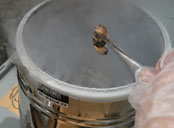 |
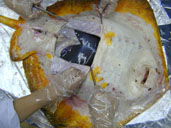 |
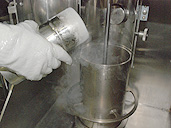 |
| On site freezing of bivalves | Resection of stingray liver | Stamp mill (coarse milling) |
(1) Bivalve specimens collected at various sampling sites are dissected and frozen with liquid nitrogen on site.
(2) Stingray (Dasyatis akajei ) specimens collected in Tokyo Bay are carried to the laboratory and the liver is resected on the day of sampling.
(3) The frozen sample is put into a titanium stamp mill, which is like a mortar and pestle, with liquid nitrogen. The samples is pound by the head of pestle and pulverized into powders. Coarse particlues (ca. 5 mm) are obtained through stamp milling.
| (4) | (5) | (6) |
|---|---|---|
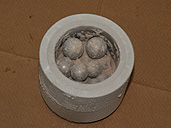 |
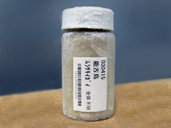 |
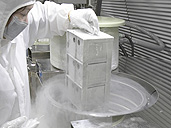 |
| Ball mill (fine milling) | Bottled specimen | Store in a LN2 container |
(4) The coasely milled particles are then transferred to pre-coled ball mills made of titanium and finely milled. The median particle size of final product is around 50 microns.
(5) The powdered samples are put into several bottles. Because the cryogenic milled powder is easily thawed and changed to paste, all procedures must be executed quickly at low temperature.
(6) Bottled specimens are stored in the long-term cryogenic storage (-150°C) over liquid nitrogen vapor.
The quality of the milled products is confirmed by checking particle size distribution and homogeneity testing for inorganic elements.
Milling and bottling procedures are conducted in clean room and a procedural blank is periodically examined in order to prevent unexpected contamination.
The outreach of Time Capsule program
We expect that the Time Capsule specimens will contribute to the following issues.
Through the analysis at the point of collection, we obtain the status concentration range of various substances in the environment. When we continue this type of environmental monitoring, we can describe temporal trend and spatial distribution of the pollutants or environmental status covering all over Japan. For example, distribution of organofluorine compounds (PFOS and PFOA) in bivalves, which are recently attracting considerable attention, is shown in the figure.
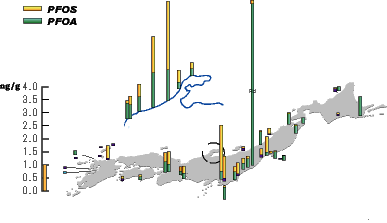
In the course of retrospective analysis of the archive, we can determine the analytes consistently and precisely by the newest method and with little bias liable to occur by the change of analytical procedures or analyst's skill. It leads to the precise interpretation of archives and improvement of monitoring techniques. Consequently, we will not overlook a slight change occurring in the environment.
Furthermore, as is shown in the right figure, in the case of oil-spill accident from a stranded tanker, we were able to confirm the impact and seriousness of pollution and the degree of environmental restoration after the accident by comparing the data of monitoring and archived specimens of the area.
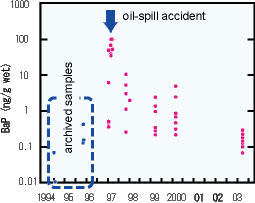
When a new environmental issue occurs or unexpected pollutant is found in the environment, Time Capsule specimens will give the information when the pollutant started spreading in the environment and how severe the pollution level is. Accordingly, we should prepare the best Time Capsule specimens for any purposes and preserve them for future use.
Specifications
Long-term cryogenic storage
10 LN2 contaners (400 L) for environmetal specimens (19 in total)
capacity, 9000 bottles (50 mL, glass bottle)
automatic suppliere of LN2, diagnostics
clean room equipped with activated charcoal fiber filter (class 1000 equivalent)
Cold rooms
-60°C 67m2 2rooms
capacity, 1920 boxes (50 L)
Freezer room
-80°C 7 deep freezers
clean room equipped with activated charcoal fiber filter (class 10000)
Environmental sample preparation laboratory
cryogenic milling, LN2 supply
clean room equipped with activated charcoal fiber filter (class 10000)
Chemical preparation laboratory
clean room equipped with activated charcoal fiber filter (class 10000)
Analytical instruments laboratory
LC/MS/MS(Applied Biosystems), ICP-MS, GC-QMS, GC-HRMS, GC-ECD, PCGC, microwave digestion apparatus
Liquid nitrogen tank
7.7m3

